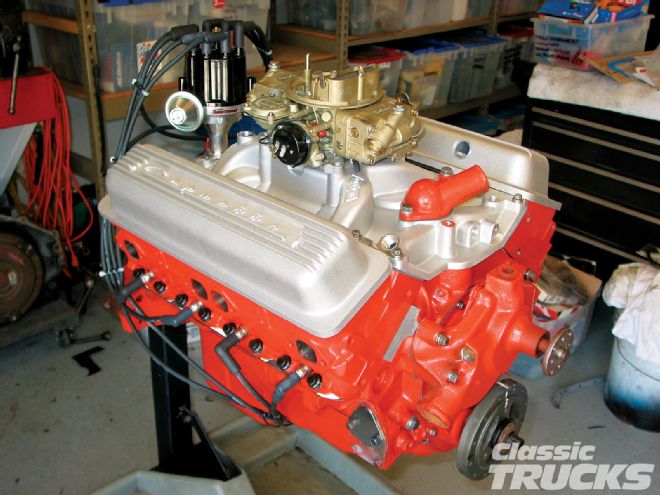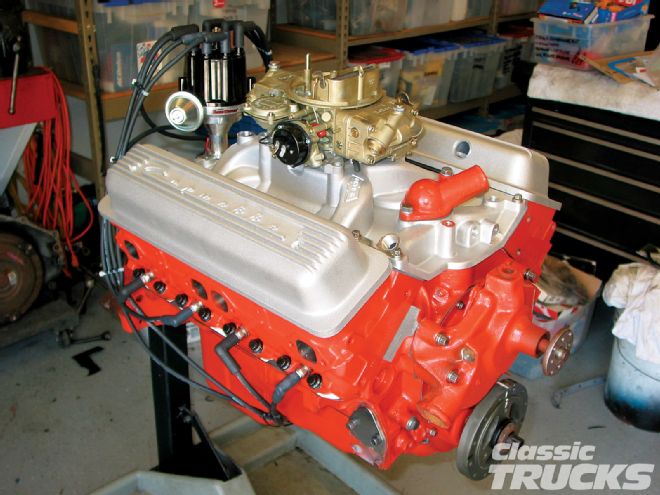
I walked into my pal John Barkley's garage one day a few months ago and found him hovering wrench in hand over a small-block Chevy short-block-not an uncommon occurrence as Barkley is a lifelong drag racer and SBC aficionado. At that point I assumed he was assembling another one of his race motors, but when I asked what he was up to, he explained that he was freshening up an early pre-smog engine, a vintage '64 327 in fact-and he seemed pretty excited about it too. Not being a real engine guy (to me a rebuild usually consists of degreasing and repainting) I asked if he was building another race motor. "Nope, I'm just freshening up this old 327 I yanked out of my '57. These older pre-smog motors are getting pretty rare, and because of the smog laws some states have on the books, it's a perfect engine for a street rod or classic pickup as its casting numbers are unique to that era. This one has about 20,000 miles on a complete rebuild so the bottom end is in great shape. But being such an early engine it has a pretty stout compression ratio (10.0:1) and the early valvetrain required leaded fuel to help lube the valve stems and guides-that's two strikes against running it on the lead-free fuel we're stuck with these days. So I thought I'd just update the top end-in the previous rebuild the block was bored .040-over and the new slugs sit about .040 or .050 below deck height. That reduced compression a bit and the new RHS Vortec-style heads I chose have a larger chamber (64 cc versus 60 cc) than the stock ones so that drops the compression into a more lead-free fuel-friendly range."

Well, it made sense to me-especially his wish to take advantage of an engine that is really smog compliant (or legally non-compliant as the case may be) and to end up with a powerful engine that runs on the crappy fuel we're stuck with these days. Another thing he brought to my attention was the importance of matching components. Though Barkley is well versed in what works and what doesn't, he does suggest utilizing the expertise of the professionals available through the tech lines most all component manufacturers offer. These folks are adept at offering suggestions that help a novice or the occasional engine builder end up with a powerplant that really fits their needs or wants.
In this case Barkley had his starting point (the early 327 we're showing here) and his choice of the RHS No.12410-01 cylinder heads. From that point he dialed up the COMP Cams tech line for some input regarding his intentions and what combination of components would help him achieve his goal. After a bit of back and forth as to what he was looking to achieve COMP suggested a cam kit that'd work well in that regard (in this case a COMP Extreme Energy cam kit No. SK 12-234-2). Using this suggestion and his practical experience Barkley gathered the balance of components for the build that I luckily walked in on.
And since I'm not the best source of engine building tech it'd more than likely be best to take a look at the images I took that day. I certainly came away with a better understanding of what he was doing, and his results were exactly what he'd hoped to achieve-a great performing pre-smog engine assembled in a weekend for a modest investment in time and greenbacks.